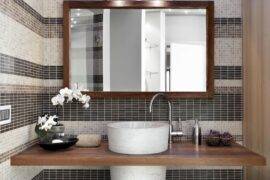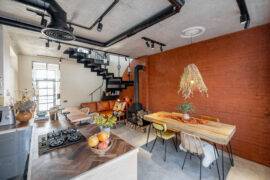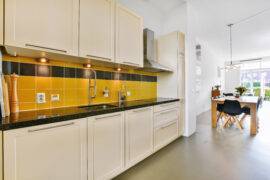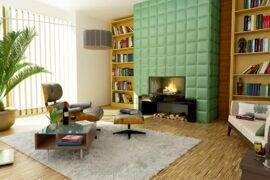The kitchen is a showcase of modern design in itself. However, it was and remains a working area, which means that proper lighting should not be neglected. Same goes for your dining room, if you want to see where you stick your fork.
There can be no arbitrary choices in drafting the electrical plan of the kitchen and dining area. Since it is an essential space, there is little flexibility in determining the light positions and once you have, you’ll be stuck with them for a long time.
Let’s see how it’s done best; kitchen lighting is first.
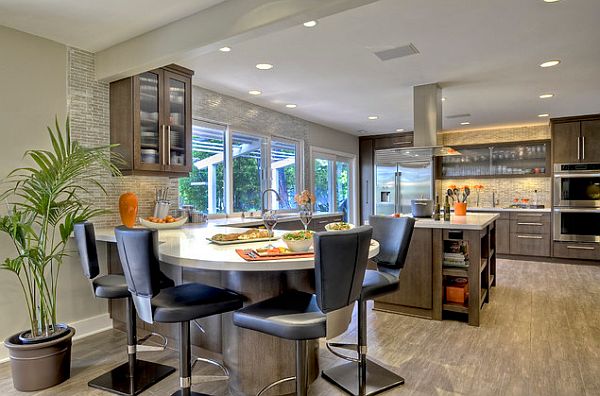
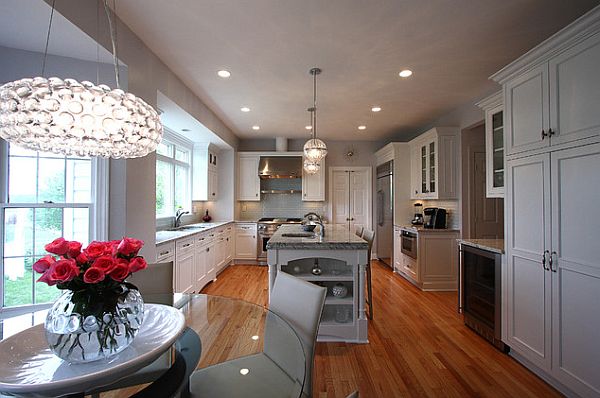
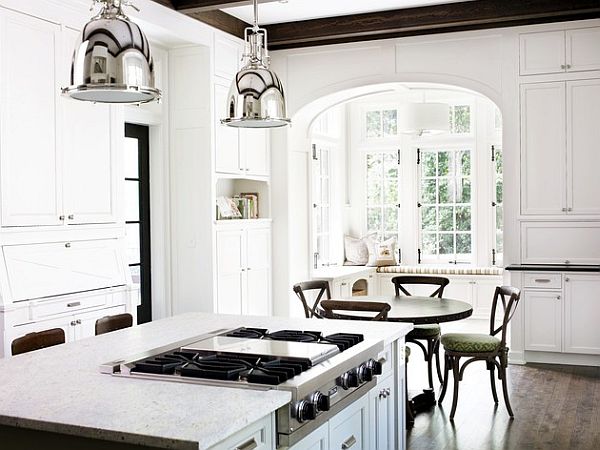
An important aspect is illuminating the preparation and work surfaces properly and with the right lamps. It is generally known that artificial light affects the color and appearance of objects, and when cooking a meal, you want to examine your groceries and vegetables in the proper light.
Best for this task is installing a track with small built-on track lights, using halogen lamps. These are known for their exquisite lighting quality and for their 100 per cent rendering of the visible light spectrum. In a nutshell, they’re the man-made equivalent of daylight. However, warm colored LEDs are also an option, if the heat radiated by halogen spots is bothering you – halogen lamps are thermal radiation based.
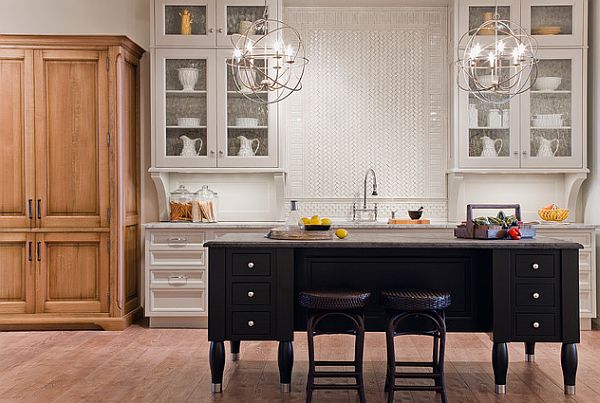
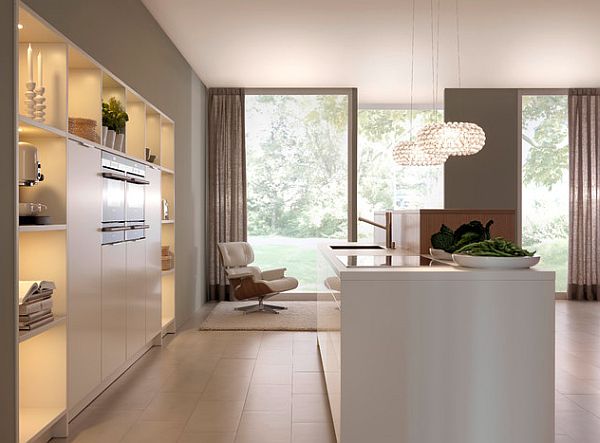
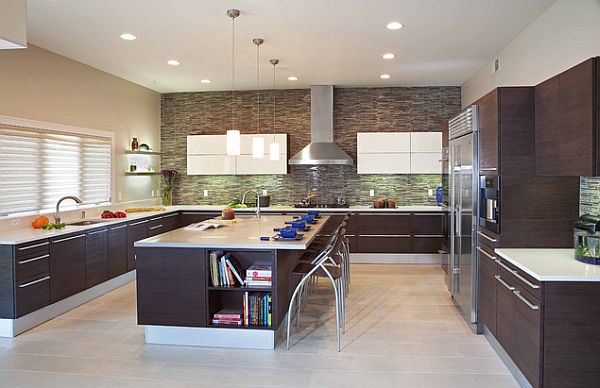
If a track with lamps that can be pulled back and forth and directed seems too ostentatious and you don’t practice that level of cuisine, try a soffit with simple in-built pivotable spots. Such spots can also be installed under the suspended kitchen cabinets over the working surfaces. These spots are discreet and manage to highlight smaller areas properly. In a minimalistic kitchen, a slightly hung or detached soffit with built-in spots and with LED-strips hidden under the rim is very modern and visually effective.

A more extravagant approach is an illuminated ceiling, which basically consists of a soffit with in-built light screens, usually rectangular. These light screens are actually LED lamps in a housing, behind a micro-prismatic or matt cover that diffuses the light. They can be custom made, but there are also large, flat lamps, even round-shaped, which can be built-in to give the impression of illuminated ceiling. The light effect is rather general and even, and very cutting-edge.
(Kitchen images by Brian Watford ID, NVS Remodeling & Design, Leicht Küchen AG, Kristin Lam Interiors, pediniusa.com, Divine Kitchens & Venegas and Company)
Turning to the dining room, there is more playroom for fantasy. So how exactly should you light your dining area?
Best over a drink or breakfast bar are small pendant lamps, cylindrical, oval, or in the shape of upside down champagne glasses, in groups of 3 to 5. They are elegant, visually appealing and also practical. Best if hung low, so they don’t glare, since there is no danger of bumping ones head into them while seated.
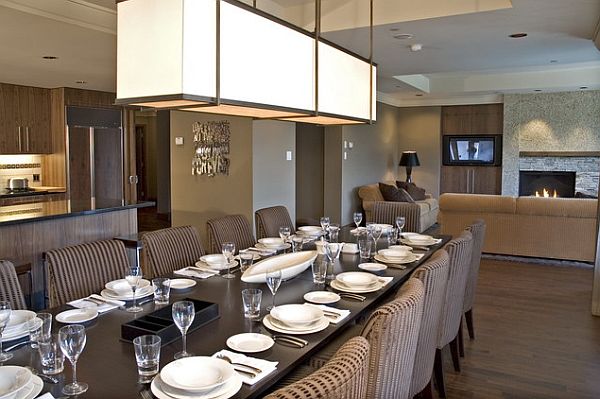
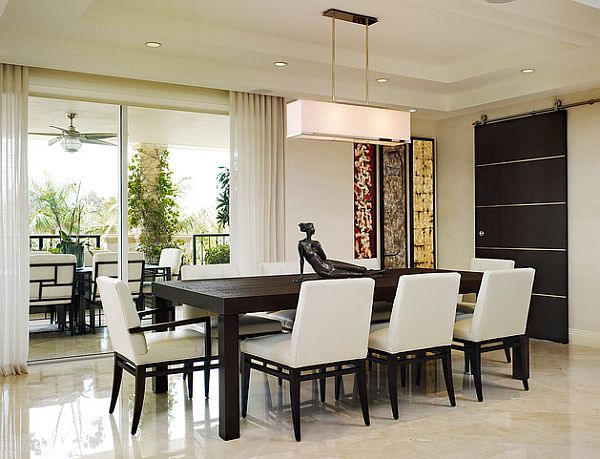

Such an arrangement can also be used for a dining table, but there are other more flexible and spectacular choices. If you have a vast dining table, choose one very large designer lamp hovering over it, or 2-3 large ball-shaped lamps hung asymmetrically, in clusters.
By following these simple guidelines, you can use fantasy for bringing the beneficial effects and the artful appearances of light into the space where you eat, drink and enjoy conversation.
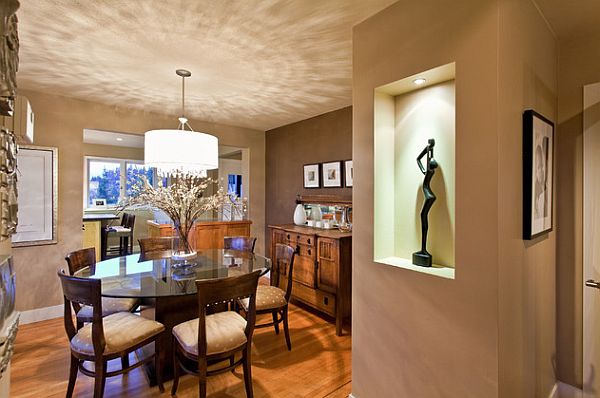
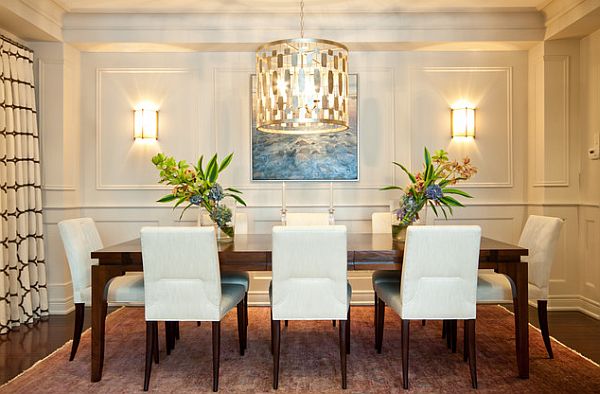
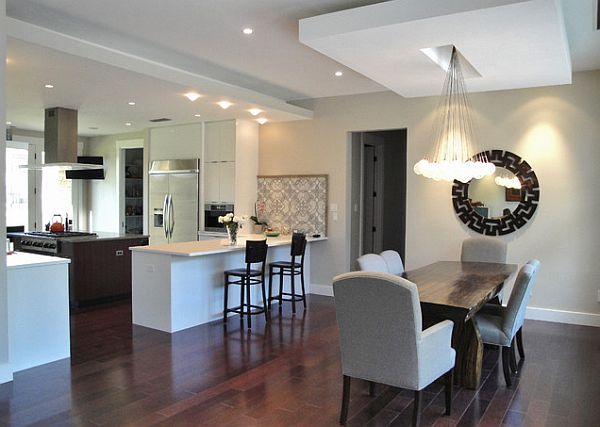
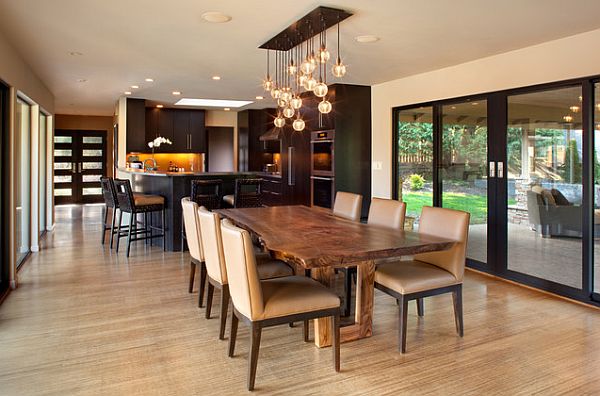
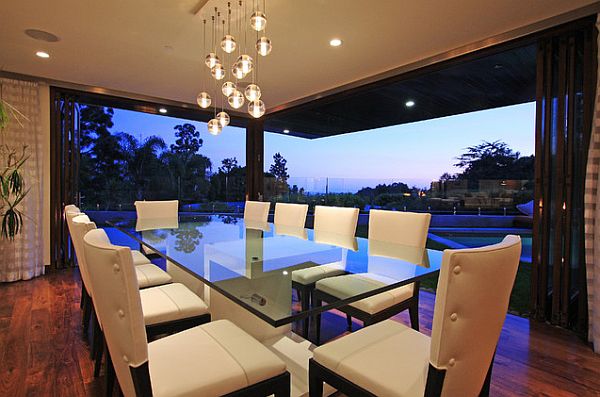

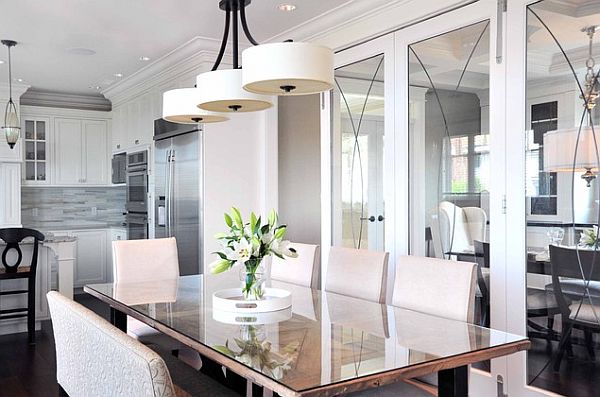
(Dining room setups by Claudia Leccacorvi, Arnold Schulman Design Group, Elad Gonen & Zeev Beech, Synthesis Design, Shirley Meisels, PPDS / Tarrytown Residence, Giulietti Schouten Architects, Globus Builder, christy johnson, Enviable Designs)


